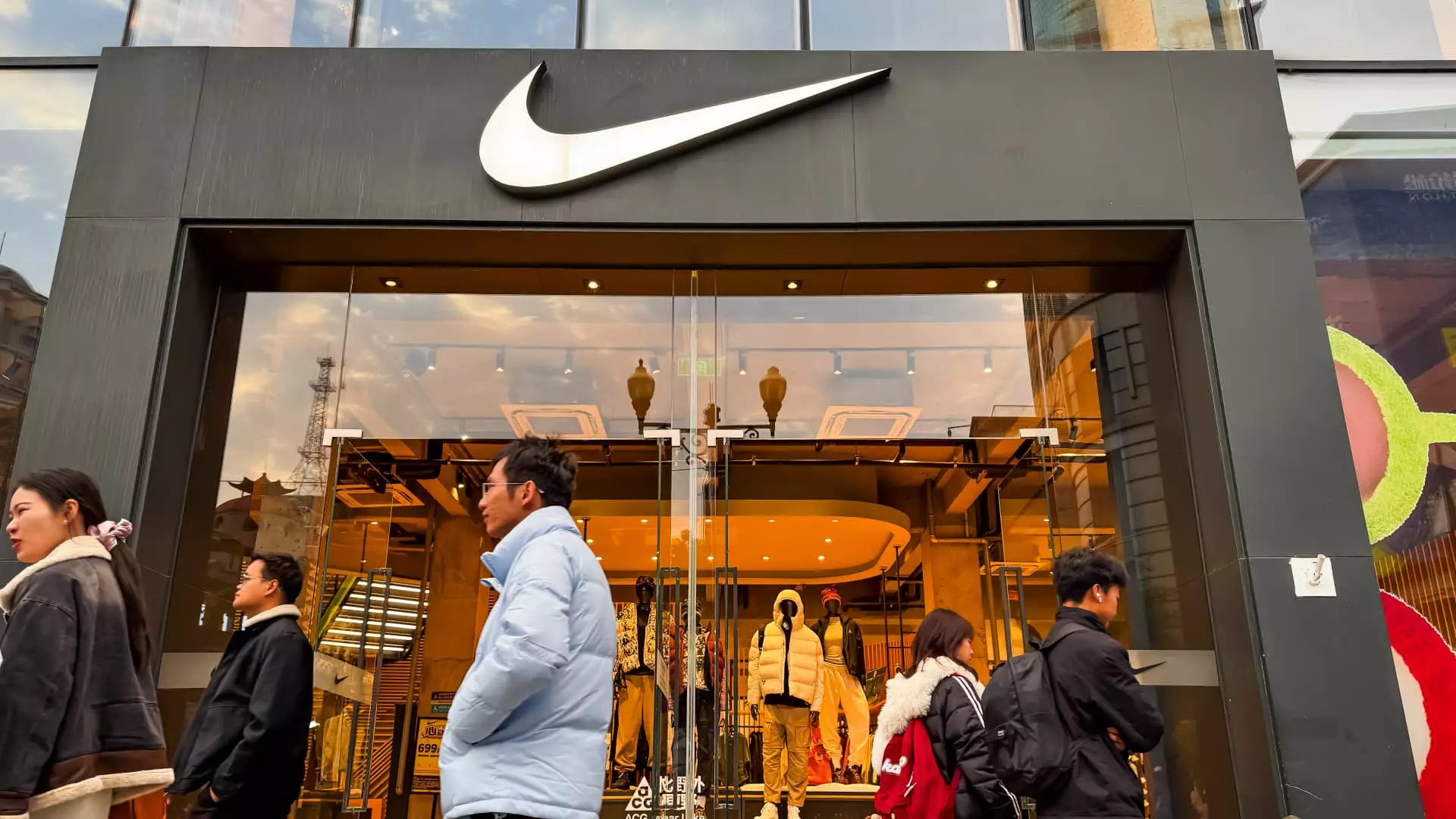On Thursday, Nike delivered a stark warning that had many investors raising their eyebrows: the company predicts a significant double-digit decline in sales for the upcoming quarter. This forecast is particularly disconcerting, as it reflects not just internal challenges in executing a turnaround plan under new CEO Elliott Hill, who has now been in the position for five months, but also external pressures that are tightening around the sneaker giant. Executive Matt Friend has hinted that sales may drop within the “low end” of the “mid-teens range” as adverse factors accumulate. The severity of this projection caught analysts off-guard, leading to an unsettling 4% drop in share prices and accentuating broader concerns over consumer confidence which, it seems, is anything but buoyant.
It’s alarming to see a brand that once epitomized prosperity in the sporting goods industry faltering under the weight of its own ambitions. The very essence of a global powerhouse like Nike shines dimmer in the face of these trials, and the significant 4-5 percentage points drop in gross margin raises questions about the company’s foundational values and its long-term sustainability.
Clearing Out Inventory: A Cautionary Tale
Nike’s strategy to clear excess inventory and stale offerings, while understandable, underscores a deeper issue; the company appears out of touch with its consumer base. There’s an unsettling sense that Nike believes it can simply push through this inventory problem, but we must consider why these products became stale in the first place. Instead of merely discounting outdated styles, there needs to be a more profound understanding of what today’s consumer desires. The philosophy of “win now” actions sounds appealing in theory, but in practice, it seems to have blinded the company to the core problem: relevancy.
Nike has always prided itself on being at the forefront of innovation; yet, that innovation feels stagnant. The ongoing effort to offload unsold stock and pivot toward new designs must go hand-in-hand with a robust rethink of design principles and marketing strategies. Will superficial fixes satisfy consumers craving aspirational products, or is this an invitation for more vexing market issues as competitors snatch up the loyal customers Nike seems increasingly unable to appease?
Global Dynamics: Tariffs and Consumer Confidence
A complex web of geopolitical dynamics, coupled with heavy new tariffs from the U.S. government on imported goods from China, is making it increasingly difficult for Nike to navigate the stormy seas of international trade. This dependency on Chinese manufacturing, with approximately 24% of suppliers based there, raises critical questions about the resiliency of Nike’s supply chain in turbulent times. Economists have warned that as consumers tighten their belts, non-essential luxury items, like high-end athletic footwear, are often among the first things cut from household budgets.
In a troubling twist of irony, as Nike ramps up prices to offset these tariffs and rising operational costs, the very consumers it seeks to woo may recoil at the thought of paying a premium. Should they choose to prioritize financial security over the allure of style and brand loyalty, Nike risks losing a loyal clientele that may never return. The erosion of consumer confidence is palpable, and Nike must recognize that the marketplace has changed. People no longer buy products solely for branding but increasingly seek value—which, as it stands, Nike has failed to offer.
Staying Relevant in a Shifting Marketplace
In response to these pressures, Nike is attempting new strategies to reconnect with its consumer base, including collaborations with cultural icons like Kim Kardashian. While this might spark temporary buzz, one has to wonder: Are these partnerships genuine expansions of the brand’s ethos or merely last-ditch marketing ploys? The burgeoning interest in women’s athletics as a commercial focus is commendable; however, it raises the stakes. Lululemon, Alo Yoga, and others are not resting on their laurels, and losing market share in female apparel could prove disastrous. While Nike may believe these efforts will reset their trajectory, time will tell if they genuinely resonate with the women they aim to engage.
Moreover, Nike’s newfound commitment to women’s sports through fresh ad campaigns is encouraging, but it may not be enough if these initiatives fail to translate into meaningful product innovations. Without compelling offerings that truly resonate with women athletes, these advertisements risk becoming noise in the background rather than transformative promotional strategies.
Next Steps: The Imperative for Innovation
As the marketplace evolves, Nike’s focus on reinvention and innovation must be more than mere rhetoric. Move beyond cosmetic changes, Nike needs to adopt a mindset shift that embraces adaptability. Shareholders and analysts are keen to see signs that Nike’s product pipeline is on the verge of renewal. If the company can’t restore consumer optimism through genuine innovation and an understanding of what consumers crave, it faces the daunting task of rebuilding a shattered market position.
The turbulence in Nike’s operations is more than a quarterly setback—it signals a turning point for a brand that has often seemed invincible. Without an agile response to the rapidly changing retail landscape, the fallout from its current struggles may leave lingering scars that challenge Nike’s standing for years to come.

